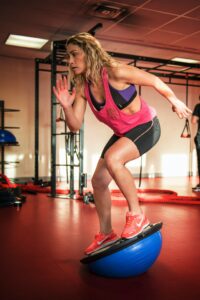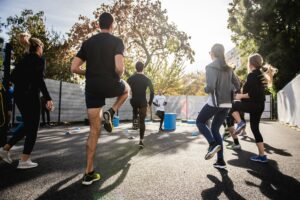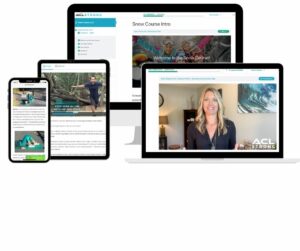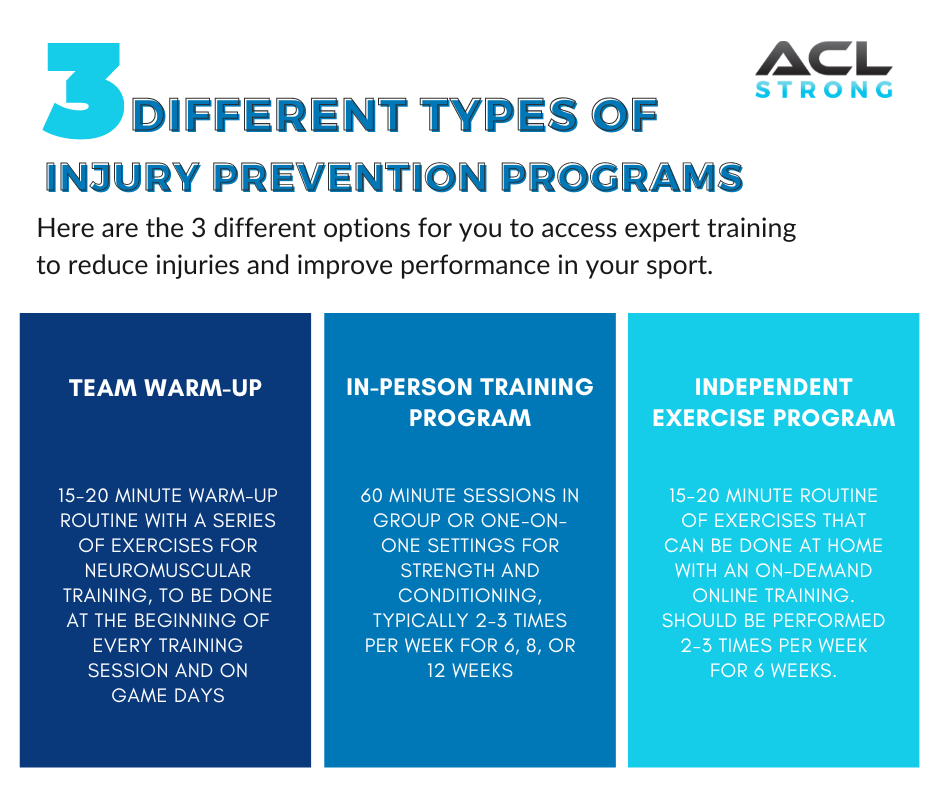An injury to the Anterior Cruciate Ligament, known as the ACL, can be season-ending and life-changing for a competitive athlete. As a coach, parent, or athlete, you would prefer to hear anything besides those three letters…A.C.L, which is why choosing an injury prevention program before that happens is essential.
A torn ACL is a common knee injury faced by competitive athletes, particularly in sports that involve cutting, pivoting, and jumping. Soccer is the #1 sport for female ACL injuries, followed by basketball at #2. For male athletes, football is the #1 sport for torn ACLs, while soccer and lacrosse are also high on the list. Statistics show that 12-17 year old athletes are the most vulnerable; and a majority do not return to the same level of play after a major reconstructive surgery and a year of rehabilitation.
If you’re worried about an ACL injury, there’s good news…you don’t have to go down without a fight!

Injury Prevention Programs are PROVEN to reduce the risk of ACL injury by 53% (up to 67% for females!) through a certain type of training (neuromuscular training) that targets strength, balance, movement, and body control. This training is also shown to help athletes jump higher, cut harder, and get to the ball faster, too!
The best way to avoid an ACL injury (and other non-contact injuries involving the lower limb), is to participate in an injury prevention program.
So, where do you start?
Coaches, athletes, and parents, you’re not alone if you’re confused on where to turn. With SO much information online, it can be quite confusing and overwhelming. How do you know what exactly to do or who to listen to???
👍 By the simple fact that you are reading this, it’s a sign that you are on the right track!
In this post, we will discuss 3 different types of injury prevention programs that might be available to you, and the pros and cons of each. The goal is to give you clarity by highlighting GOOD options and a variety of ways to access expert training, no matter where you are located or what your resources are. You don’t have to waste any more time waiting around and wondering what more you could be doing to protect yourself or your athletes!
Whether you’re a coach wanting to help your players stay healthy and avoid injuries…
or you’re a parent who does not want to see your child suffer an ACL injury…
or you’re an athlete who wants to be the best you can be so you can earn a college scholarship…
The best program for YOU is the one you will commit to and stay consistent with.
Here are 3 options for you to access expert training to reduce injuries and improve performance in your sport.
Note – All of the following are:
- Proven by research
- Progressive and Safe
- Developed by experts
- Recommended
Team Warm-Up

Description: 15-20 minute warm-up routine with a series of exercises for neuromuscular training, to be done at the beginning of every training session and on game days
Example: FIFA 11+ (designed for soccer)
Pros: Clear, Easy-to-Follow, Free, On-field or On-Court, Replaces a traditional warm-up, Easy to repeat every year, Sustainable
Cons: For parents and athletes, you have to rely on a coach to implement this. For coaches, you have to learn how to teach it properly, and implement it consistently; also, it might replace a traditional routine that you aren’t sure you want to give up.
In-Person Training Program

Description: 60 minute sessions in group or one-on-one settings for strength and conditioning, typically 2-3 times per week for 6, 8, or 12 weeks
Example: PEP, Sportsmetrics, and other independent programs designed by PTs or ATCs
Pros: Personalized training (especially if 1:1), Expert guidance available, Sport-specific, Less self-motivation required
Cons: Big time-commitment, Less flexible schedule as appointments are scheduled, Located at a clinic/facility/field, Expensive, More difficult to repeat every year and stay consistent with (due to expense and time), Less Sustainable long-term
Independent Exercise Program

Description: 15-20 minute routine of exercises that can be done at home with an on-demand online training. Should be performed 2-3 times per week for 6 weeks.
Example: ACL Strong
Pros: Clear, Easy-to-follow, Less Time-commitment, Less Expensive than In-Person programs, Flexible schedule (anytime, anywhere), Expert guidance available, Easy to repeat every year or continue consistently, Sustainable
Cons: More self-motivation required (although better for developing good habits for life)
*Teams can implement ACL Strong as a hybrid program with one training day together and the remainder at home, which can help with keeping athletes accountable and motivated to complete the training.
Injury prevention programs are the MOST EFFECTIVE way to keep knees strong and healthy so the risk of injury is reduced. Furthermore, injury prevention programs teach athletes how to move more efficiently, helping them to perform better in their sport and be a more dynamic athlete overall. We recommend investing your time into a professionally designed program rather than figuring it out for yourself. Programs are available in a variety of ways, all with their own pros and cons. Hopefully this provided some clarity for you to choose which program is best for you or your athletes.
Another tip… Don’t be afraid overlap these strategies. Here is an example of what I see some of the top soccer coaches do: They start their players in the ACL Strong group program in the pre-season to get them stronger and moving more efficiently so they kick off the season better than ever before. They then add the FIFA 11+ program as a team warm-up on training days and game days. Combining preventative programs helps protect the players and their futures as much as possible, and gets the team competing on a higher level for a winning season.
Good luck with your decision!
Click Here for a FREE Report on Why Injury Prevention Programs are ESSENTIAL for Female Athletes Pursuing a College Sport



